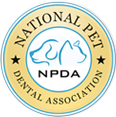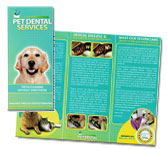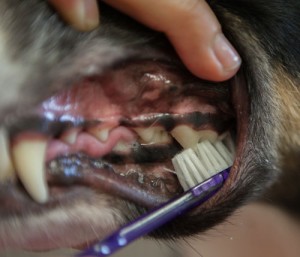“The services provided by Pet Dental Services have proven to be invaluable to our practice. Our clients appreciate the safety and convenience that non-anesthetic dentistry provides to their pets. Pet Dental Service’s staff is incredibly kind and patient with the pets in their care. Even some of our fearful patients are able to benefit from a full dental cleaning due to the gentle care provided by the PDS staff.”
What Bleeding Dog Gums Can Indicate
Warning! What Bleeding Dog Gums Can Indicate
Bleeding dog gums and red gums are associated with inflammation and gingivitis. These are indicators of poor oral health for your dog or cat. Many pet owners fail to recognize the need for brushing a dog’s teeth or professional dental cleanings. As a result tartar and plaque buildup on the teeth and gums and lead to dental conditions such as gingivitis and periodontal disease. Bleeding dog gums most often are a result of these conditions and inflammation.
Bleeding Dog Gums: Causes for Concern
Gingivitis is a reversible oral inflammation that can lead to bleeding dog gums while periodontitis affects the deeper structures, like the bones and ligaments that support the teeth. Periodontitis cannot be reversed, but it can be slowed and even stopped. Other dental concerns, such as discoloration of the teeth and gums can also be linked to oral health problems with your dog. Symptoms like black tongue should indicate that veterinary care is necessary because of possible ulcerations, a lack of niacin, or serious dental issues.
Unhealthy teeth and gums along with halitosis (bad breath) can be caused by dental diseases that can shorten the life span, cause pain and even turn fatal for your dog if left untreated. It is important to seek professional animal dental care when your furry friend experiences bleeding dog gums or other dental issues, to avoid a late diagnosis of these health concerns.
Inflammation of the gum or gingiva results from a growth of bacteria that comes from the poor oral hygiene – something that is easy to avoid! You may note when you brush your own teeth that the gums may begin to bleed if you haven’t been brushing or flossing consistently; it is the same for your dog. Bleeding dog gums can be uncomfortable for your dog. Disregarding the simple task of brushing your dog’s teeth can accelerate into serious medical issues and poor dental hygiene.
What about foreign objects?
It is true that injuries from chewing objects or toys can lead to bleeding dog gums or dental injuries. Ingestion of something toxic like chocolate, antifreeze and other poisonous substances could potentially lead to bleeding dog gums. You should always consult a veterinarian when you notice gingivitis or bleeding dog gums to find the cause. In many cases it is linked to poor oral hygiene.
Preventing Bleeding Dog Gums
Bleeding dog gums, red gums, inflammation, loose teeth and other symptoms of poor oral hygiene can be prevented by a regular routine of brushing your dog’s teeth and regular professional animal dental cleanings. As a result of regular brushing, you are stimulating healthy gums, removing plaque and warding off tartar – all of which can lead to gum disease. In between regular brushing, provide your dog with veterinarian approved dental chews and bones is ideal to keep the teeth and gums healthy. Remember to always monitor your pets while they are chewing to avoid choking.
Dental hygiene is a key in preventing serious pet health problems and protecting your dog from the discomforts of bleeding dog gums. Applying good oral hygiene habits to your daily routine can prevent unnecessary health problems in every stage of a pet’s life.

 Dr. Melissa Byers
Lake Forest Animal Clinic
Lake Forest, CA
Dr. Melissa Byers
Lake Forest Animal Clinic
Lake Forest, CA








